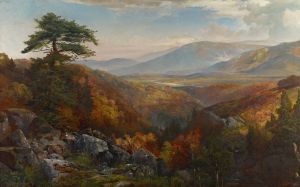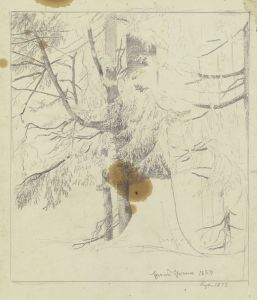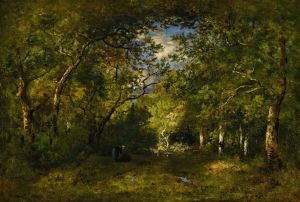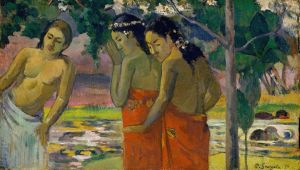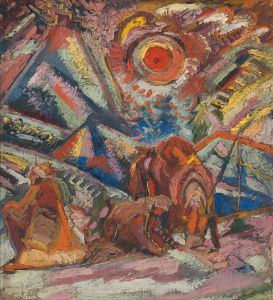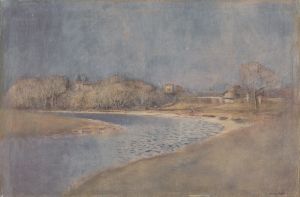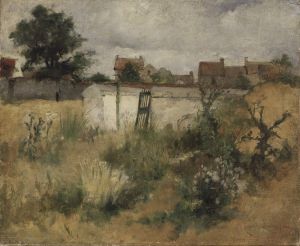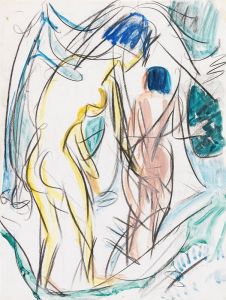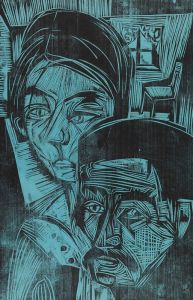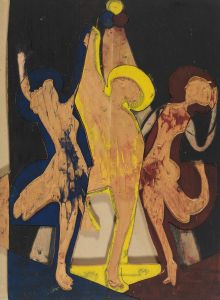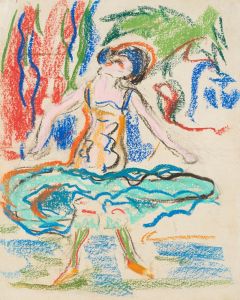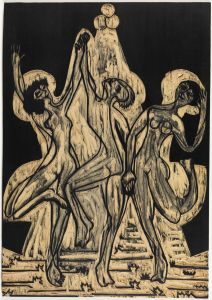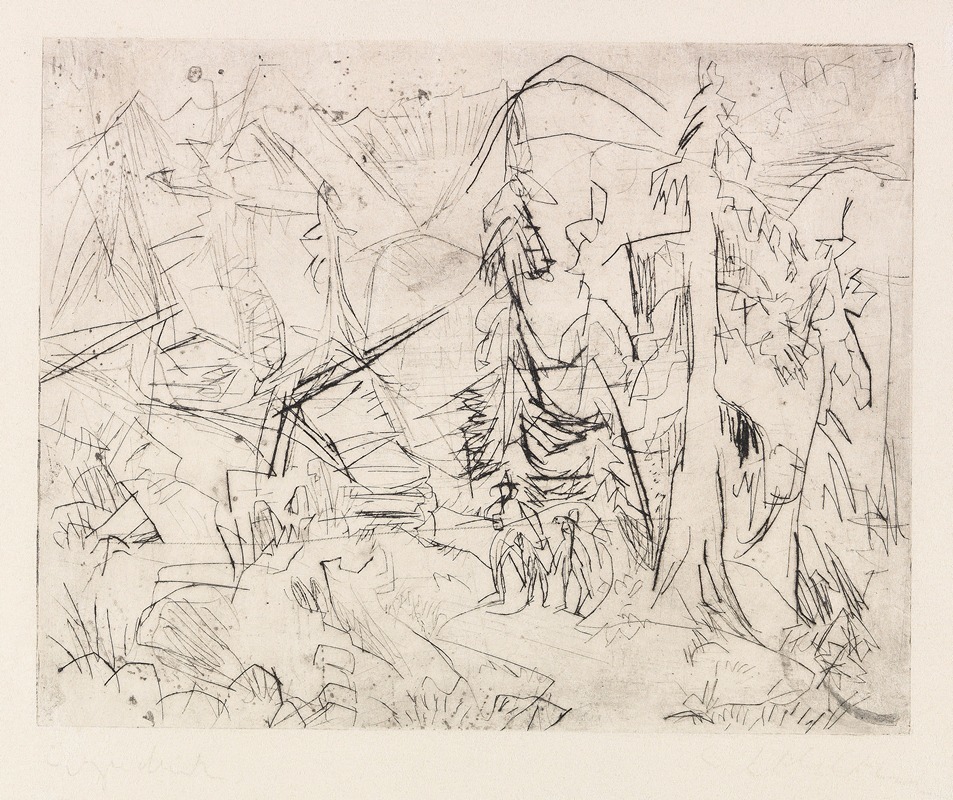
Tannen und Hütten
A hand-painted replica of Ernst Ludwig Kirchner’s masterpiece Tannen und Hütten, meticulously crafted by professional artists to capture the true essence of the original. Each piece is created with museum-quality canvas and rare mineral pigments, carefully painted by experienced artists with delicate brushstrokes and rich, layered colors to perfectly recreate the texture of the original artwork. Unlike machine-printed reproductions, this hand-painted version brings the painting to life, infused with the artist’s emotions and skill in every stroke. Whether for personal collection or home decoration, it instantly elevates the artistic atmosphere of any space.
Ernst Ludwig Kirchner's painting Tannen und Hütten (translated as Firs and Huts) is a work created by the German Expressionist artist, who was a founding member of the influential art movement Die Brücke (The Bridge). Kirchner, known for his bold use of color and dynamic compositions, often drew inspiration from nature and rural landscapes, particularly during his time in the Swiss Alps.
Tannen und Hütten reflects Kirchner's deep connection to the mountainous environment where he lived and worked after moving to Davos, Switzerland, in 1917. This relocation was partly motivated by his need to recover from physical and psychological challenges exacerbated by his experiences during World War I. The painting captures a serene yet vibrant alpine scene, featuring fir trees and rustic huts, rendered in Kirchner's distinctive Expressionist style. His use of exaggerated forms and non-naturalistic colors conveys an emotional and subjective interpretation of the landscape rather than a realistic depiction.
Kirchner's time in Davos marked a significant period in his artistic career, as he shifted his focus from urban scenes to the natural world. The Swiss Alps provided him with a sense of solace and inspiration, which is evident in works like Tannen und Hütten. The painting exemplifies his ability to merge the natural environment with his personal artistic vision, creating compositions that are both evocative and innovative.
The exact date of creation for Tannen und Hütten is not definitively documented, but it is generally associated with Kirchner's productive years in Davos during the late 1910s and 1920s. During this period, he developed a unique approach to landscape painting, characterized by angular forms, rhythmic patterns, and a vivid palette. These elements are hallmarks of his mature style and are present in this work.
As with many of Kirchner's paintings, Tannen und Hütten reflects his interest in exploring the relationship between humanity and nature. The huts nestled among the fir trees suggest a harmonious coexistence, while the dynamic composition and expressive brushwork imbue the scene with a sense of vitality and movement.
Today, Ernst Ludwig Kirchner is regarded as one of the most important figures in German Expressionism, and his works are celebrated for their innovative approach to color, form, and emotional expression. Tannen und Hütten is a testament to his artistic legacy and his ability to capture the essence of his surroundings through a deeply personal lens. The painting is held in a private collection or museum, though specific details about its current location are not widely available.





